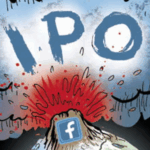 “The Sell Sider” is a column written for the sell side of the digital media community.
“The Sell Sider” is a column written for the sell side of the digital media community.
Today’s column is written by Matan Cohen, director of innovation at YouAppi.
Imagine if you could eat everything you wanted and stay trim without exercising.
You could apply that analogy to Android Instant Apps, where you can use these apps with the click of a link, without ever downloading anything.
Android Instant Apps, like many solutions rolled out by the ad tech juggernauts, can be both good and bad for publishers. On the one hand, it will be easier for a publisher to push a specific video or piece of content found in-app directly from the app store or elsewhere, enabling users to instantly engage with the content without downloading the app.
But the ease through which Android Instant Apps are opened versus traditional apps, which take minutes, resulting in most apps never getting opened, means that there will be many more in-app page views; even though users don’t need to install Android Instant Apps, they are still technically in-app views. And if the supply for in-app advertising increases greatly, the cost per impression will drop significantly – a negative for publishers.
From the user and marketer perspective, Android Instant Apps, currently rolling out with selected partners, including B&H Photo and BuzzFeed, are indeed amazing. By eliminating the biggest obstacle to in-app engagement – downloading and installing the app – Google is enabling users and marketers to have their app cake and eat it, too (without gaining any weight, of course).
Yet something that is good for two of three corners of the digital publishing triangle – users and marketers, in this case – is rarely good for the third: publishers. Though publishers will benefit from more effective marketing via Instant Apps, the loss from the decreasing cost of ad impressions will be much greater than the benefit.
The one ad metric that will increase due to Android Instant Apps is cost per click (CPC). This is because it will be much easier to click and convert when all a user needs to do is click on a link versus downloading and installing an app. And if users decide they want to install the app, they’re more likely to do so after sampling it.
Publishers can take advantage of the higher CPC by partnering with advertisers in co-branded or jointly marketed versions of the app, where they can pass along the cost to the marketer. From the end user’s perspective, the only difference between the jointly marketed app and a publisher’s app would be the branding.
As with native advertising, the marketer will benefit from being associated with the publisher’s content. Since the co-branding work is only for one link, it will be much easier for the publisher to create and market than a traditional native advertising campaign. And it will therefore be easier for a publisher to run a full campaign.
For example, if a European investment fund wants to run a campaign on a publisher like The New York Times or Bloomberg, it may agree to sponsor all articles featuring the term “Brexit” for a period of eight weeks. Since the publication would already be writing about Brexit, it would generate more revenue from a relevant and interested sponsor.
But new Android Instant Apps could also be created and marketed during the course of the campaign, undoubtedly resulting in users downloading and installing the publisher’s app to enjoy its full benefits, all of which may not be available in the Android Instant App – a win-win.
For publisher content marketing studios, the opportunities are even greater. They’ll be able to create and market lifestyle content, such as recipes sponsored by a food brand or summer exercise programs sponsored by an athletic apparel brand, that can also be marketed as an Instant App.
Maybe the download isn’t quite dead, but publishers will need to restructure their operations and content marketing to take advantage of Instant Apps.
Follow YouAppi (@YouAppi) and AdExchanger (@adexchanger) on Twitter.












